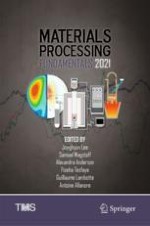This volume covers various aspects of the fundamentals, synthesis, analysis, design, monitoring, and control of metals, materials, and metallurgical processes and phenomena. Topics represented include but are not limited to:
• Experimental, analytical, physical, and computer modeling of physical chemistry and thermodynamics
• Modeling of the transport phenomena in materials processing and metallurgical processes involving iron, steel, nonferrous metals, and composites
• Second-phase particles in metals and processes and the fundamentals (experimental studies or theoretical studies) on the nucleation, growth, motion, and removal of these particles from the molten metal or reactors
• Physical chemistry, thermodynamics, and kinetics for the production and refining of rare-earth metals
• Control of industrial processes in the field of extraction and processing of metals and materials
